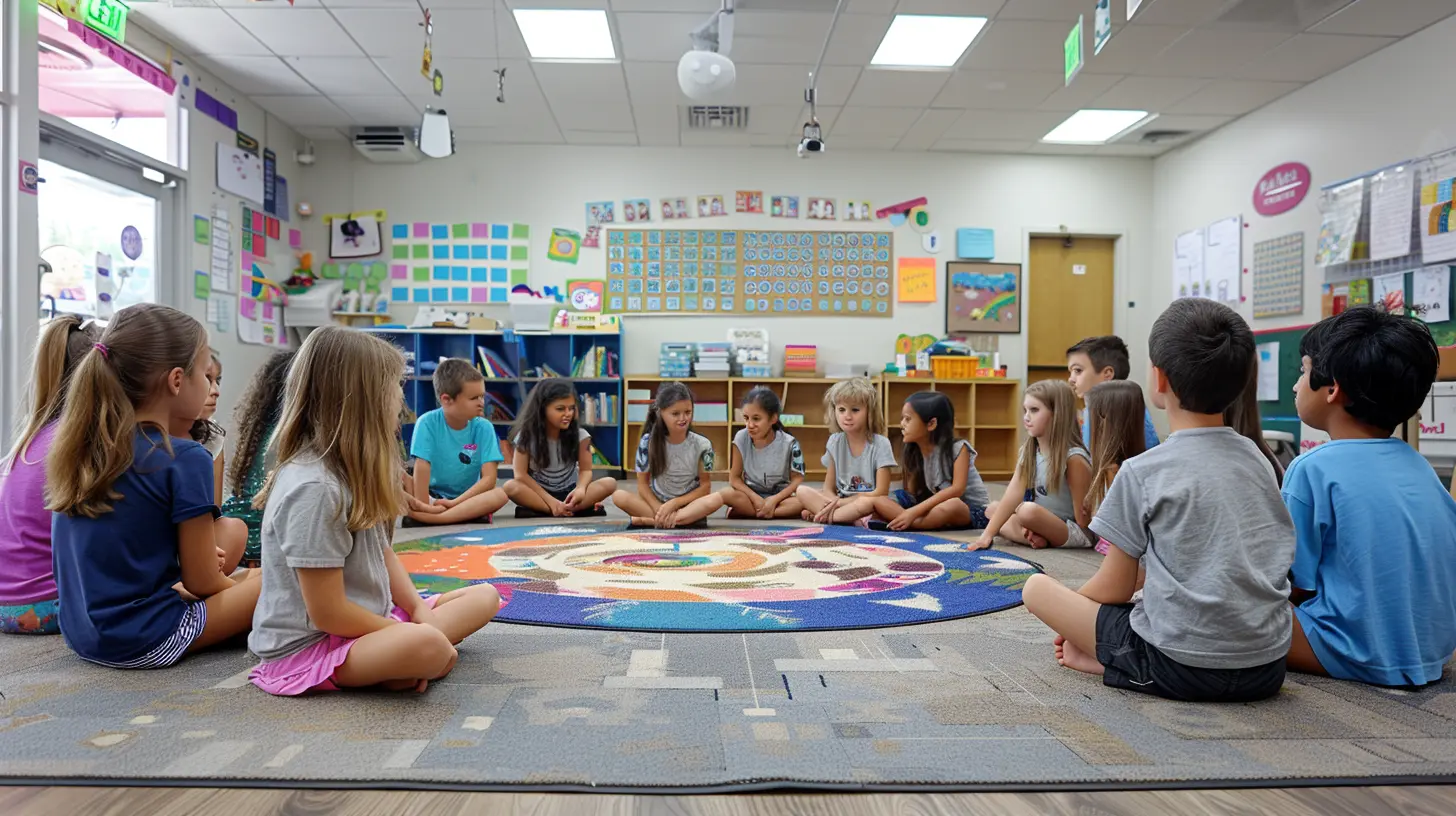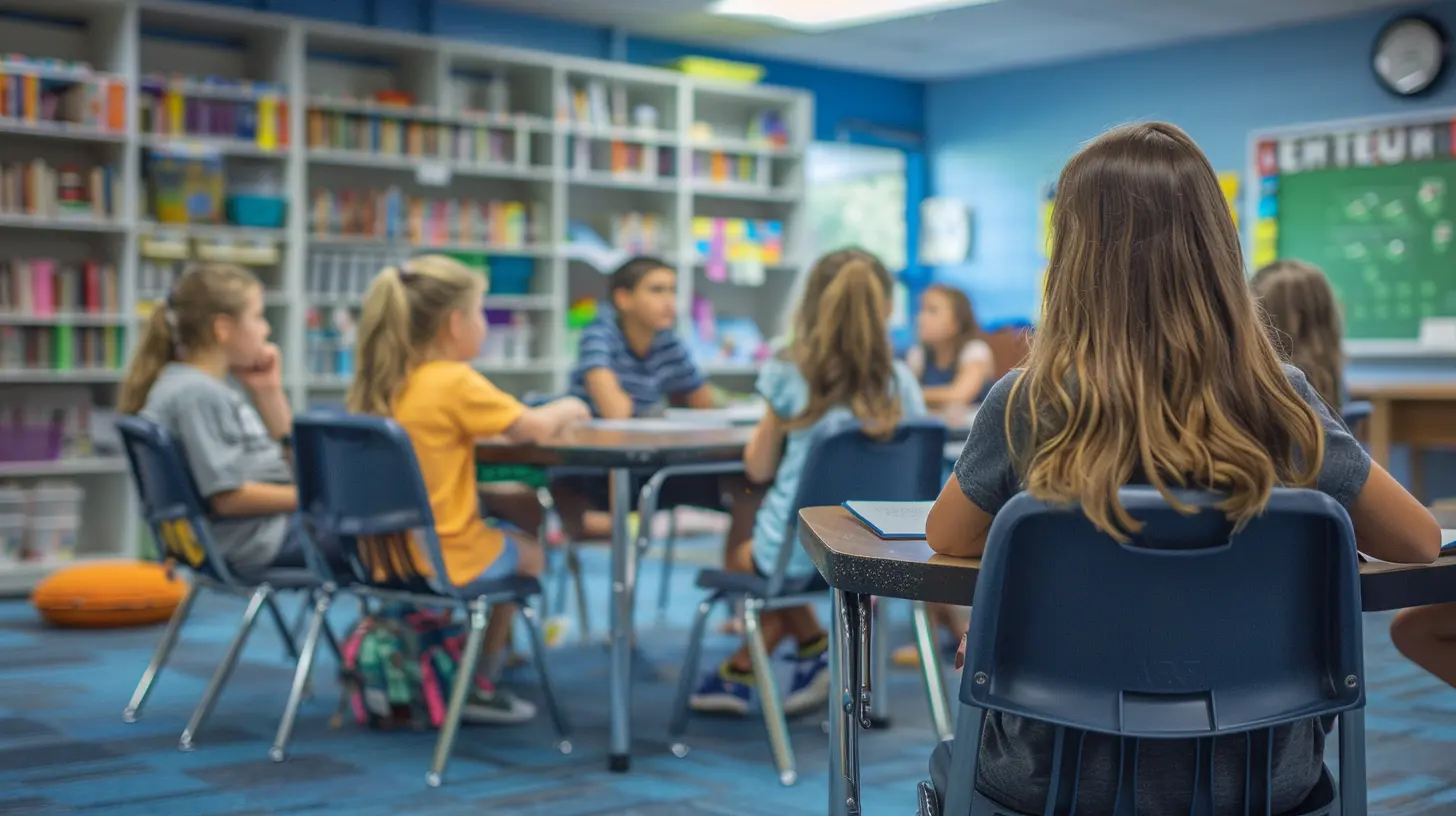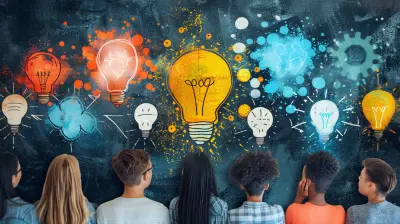27 April 2025
Collaboration is an essential skill in today’s interconnected world. Whether in school, the workplace, or everyday life, knowing how to work in teams is a game-changer. That’s where collaborative learning comes in—it’s not just about students working together but rather actively engaging in shared learning experiences.
But how do you create lesson plans that encourage teamwork and boost engagement? That’s exactly what we’ll cover in this guide. By the end, you’ll have solid strategies to design effective, group-centered lesson plans that make learning fun and meaningful. 
What Is Collaborative Learning?
Before we dive into the details of crafting group-centered lesson plans, let's define what collaborative learning is all about.Simply put, collaborative learning is when students work together to solve problems, discuss concepts, or complete projects. Instead of passively absorbing information, they actively engage, analyze, and apply their knowledge while interacting with peers.
Think of it like a basketball game. Each player contributes their skills, communicates with teammates, and strategizes to win. Similarly, in a collaborative classroom, students build knowledge together instead of learning in isolation. 
Why Collaborative Learning Matters
So, why should you bother with collaborative lesson plans? The benefits go far beyond just group work. Let’s break it down:1. Improves Critical Thinking
Working in groups forces students to analyze different viewpoints, defend their ideas, and think critically—a skill that goes beyond the classroom.2. Enhances Communication Skills
Through discussion and debate, students practice articulating their thoughts and listening to others—essential soft skills in any career.3. Encourages Deeper Learning
When students teach each other, they retain information better. The back-and-forth discussion helps solidify concepts and make learning more meaningful.4. Boosts Engagement & Motivation
Let’s be real—students enjoy learning more when they’re interacting with peers rather than just passively listening to a lecture.5. Develops Teamwork & Leadership
Collaboration helps students develop leadership skills, learn how to delegate tasks, and work towards a common goal—valuable for their future careers.
Steps to Creating Group-Centered Lesson Plans
Now that we understand why collaborative learning is crucial, let’s talk strategy. Below are actionable steps to design lesson plans that emphasize teamwork and engagement.1. Define Clear Learning Objectives
Start with the end in mind. What do you want students to achieve by the end of the lesson? Ensure your objectives align with both academic and teamwork skills.For example, if you're teaching history, instead of just learning dates and facts, students could work together to analyze historical events and their impact.
👉 Example Objective:
"Students will collaboratively analyze the causes of World War I and present their findings in small groups."
2. Choose the Right Collaborative Learning Method
Not all group activities work for every lesson. Choose a method that fits your topic and goals. Here are some effective approaches:- Think-Pair-Share – Students think about a question, discuss with a partner, then share with the class.
- Jigsaw Method – Each student becomes an "expert" on a topic and teaches their group.
- Project-Based Learning (PBL) – Groups work on a long-term real-world project.
- Debates & Role-Playing – Students take on different perspectives and defend their arguments.
Pick one based on how complex or interactive you want the lesson to be.
3. Form Balanced & Diverse Groups
Grouping students randomly can sometimes backfire. Instead, aim for diversity in skills and learning styles. Here’s how:✔️ Mix abilities – Pair high-achievers with those who need guidance.
✔️ Consider personalities – Balance outspoken students with reserved ones so everyone participates.
✔️ Rotate groups – Give students the opportunity to collaborate with different peers.
A well-balanced group encourages inclusivity and ensures no single student dominates the discussion.
4. Assign Clear Roles & Responsibilities
Ever been in a group project where one person does all the work? Yeah, not fun. That’s why assigning specific roles is key.Common group roles might include:
- Leader – Keeps the group on task.
- Recorder – Takes notes and summarizes discussions.
- Presenter – Shares findings with the class.
- Researcher – Gathers information.
This structure prevents confusion, encourages accountability, and ensures everyone contributes.
5. Create Engaging & Interactive Tasks
No one likes boring, repetitive tasks. Design activities that are creative, challenging, and meaningful.✅ Instead of a traditional essay, have students create a podcast discussing key concepts.
✅ Instead of textbook questions, have them simulate a real-world case study.
The more engaging the activity, the more invested students will be.
6. Encourage Open Communication & Respect
Healthy collaboration depends on good communication. Set ground rules for respectful discussions, such as:✔️ Active listening – No interrupting when someone is speaking.
✔️ Encourage all voices – Everyone’s opinion matters.
✔️ Constructive feedback – Criticism should be helpful, not dismissive.
This fosters a positive learning environment where students feel comfortable expressing ideas.
7. Assess and Reflect on Group Work
Assessment should focus on both the content learned and the collaborative process. Consider using:- Peer evaluations – Students rate their team members' contributions.
- Self-reflection forms – Students reflect on their own teamwork.
- Rubrics – Grade both individual and group participation.
Encourage students to discuss what worked, what didn’t, and how they can improve in future group projects. 
Overcoming Common Challenges in Collaborative Learning
While group work has huge benefits, it’s not always smooth sailing. Here’s how to tackle common challenges:🚧 Issue: Some students don’t participate.
💡 Solution: Assign specific roles and check in on progress regularly.
🚧 Issue: One student dominates the group.
💡 Solution: Encourage rotating leadership roles.
🚧 Issue: Group disagreements slow progress.
💡 Solution: Teach conflict resolution techniques and promote active listening.
Remember, collaboration is a skill that needs practice, so don’t be discouraged by bumps in the road!
Final Thoughts
Collaborative learning is more than just group work—it’s about building critical thinking, teamwork, and real-world problem-solving skills. By implementing well-structured, engaging lesson plans, you can transform your classroom into a hub of active learning and meaningful discussions.So, next time you plan a lesson, ask yourself: How can I make this more collaborative? With the right approach, you’ll see students learn deeply, communicate effectively, and truly enjoy the process.








Damian McKnight
Collaborative learning fosters deeper understanding and connection among students. By integrating diverse perspectives and skills in group-centered lesson plans, educators can cultivate critical thinking, enhance communication, and prepare learners for real-world teamwork, enriching their educational experience.
November 11, 2025 at 4:25 AM